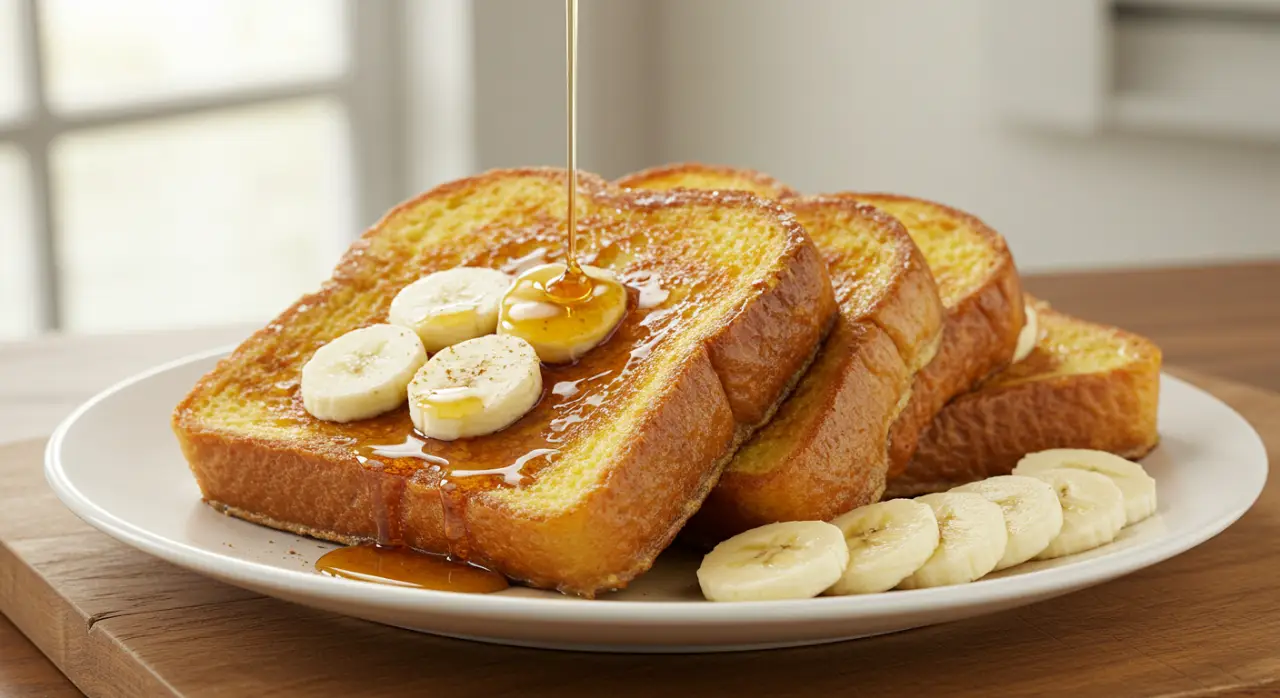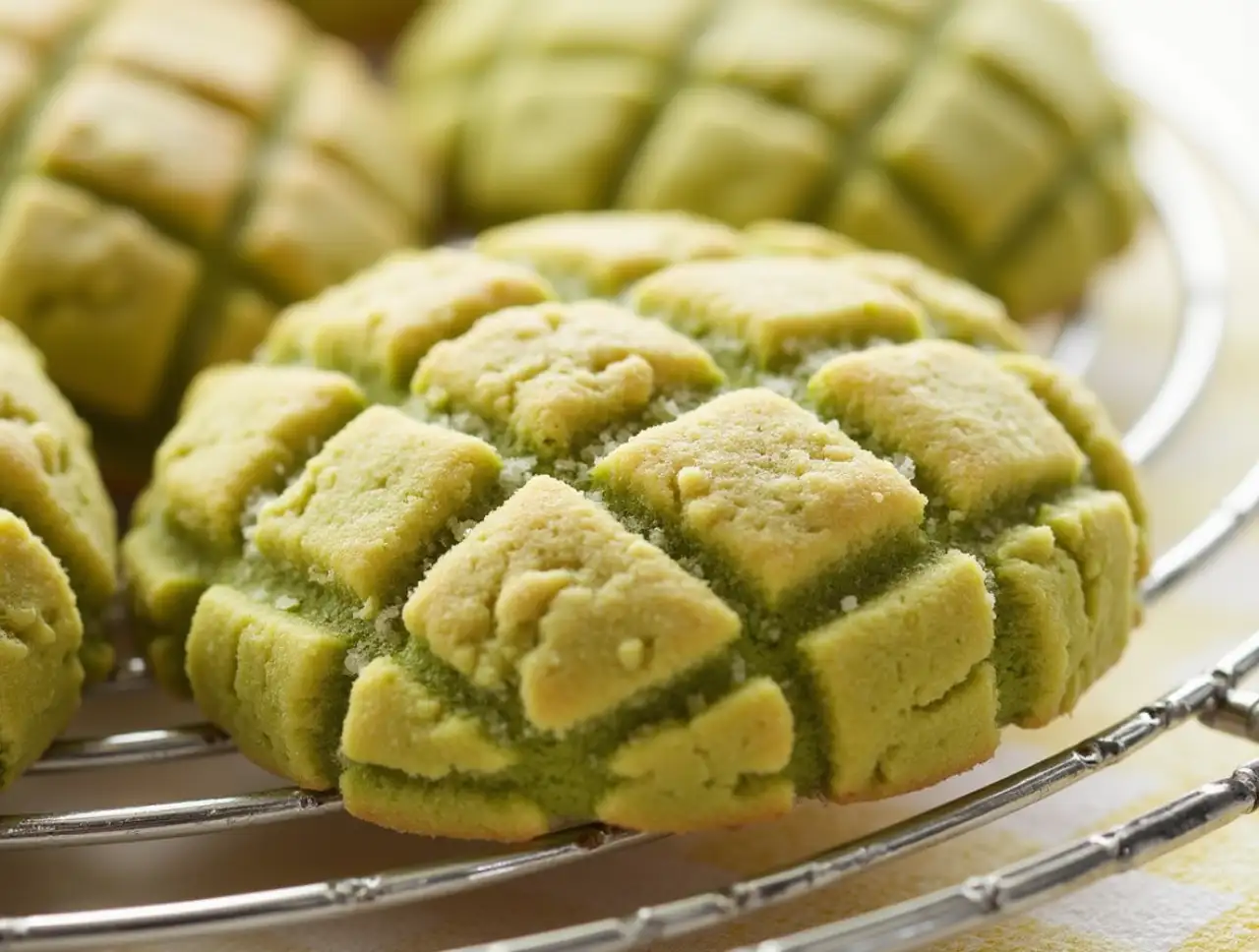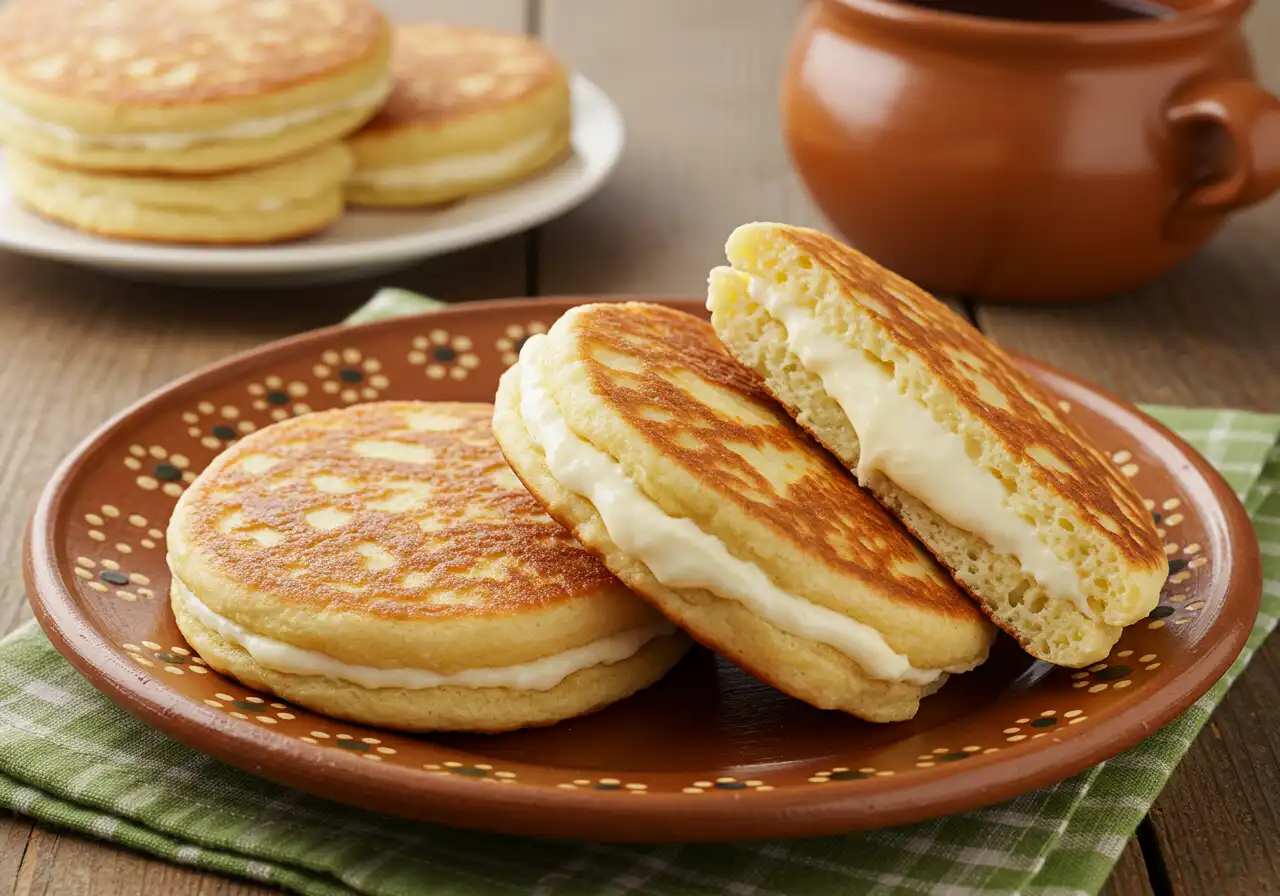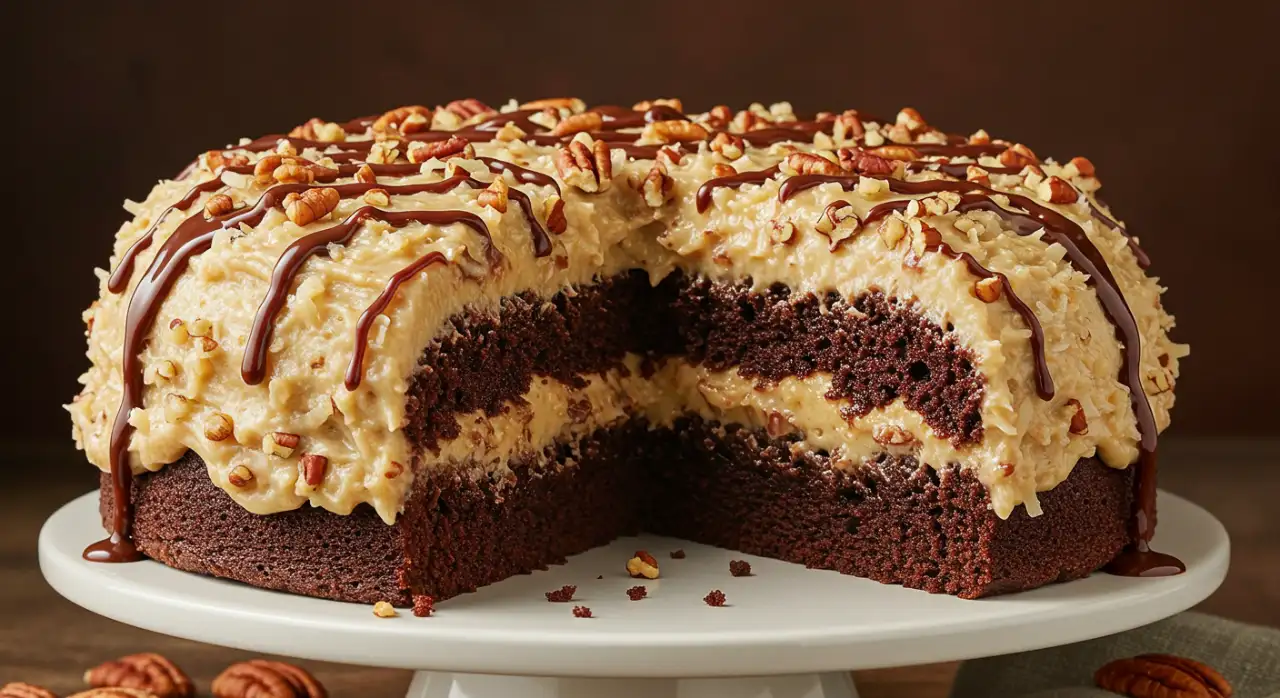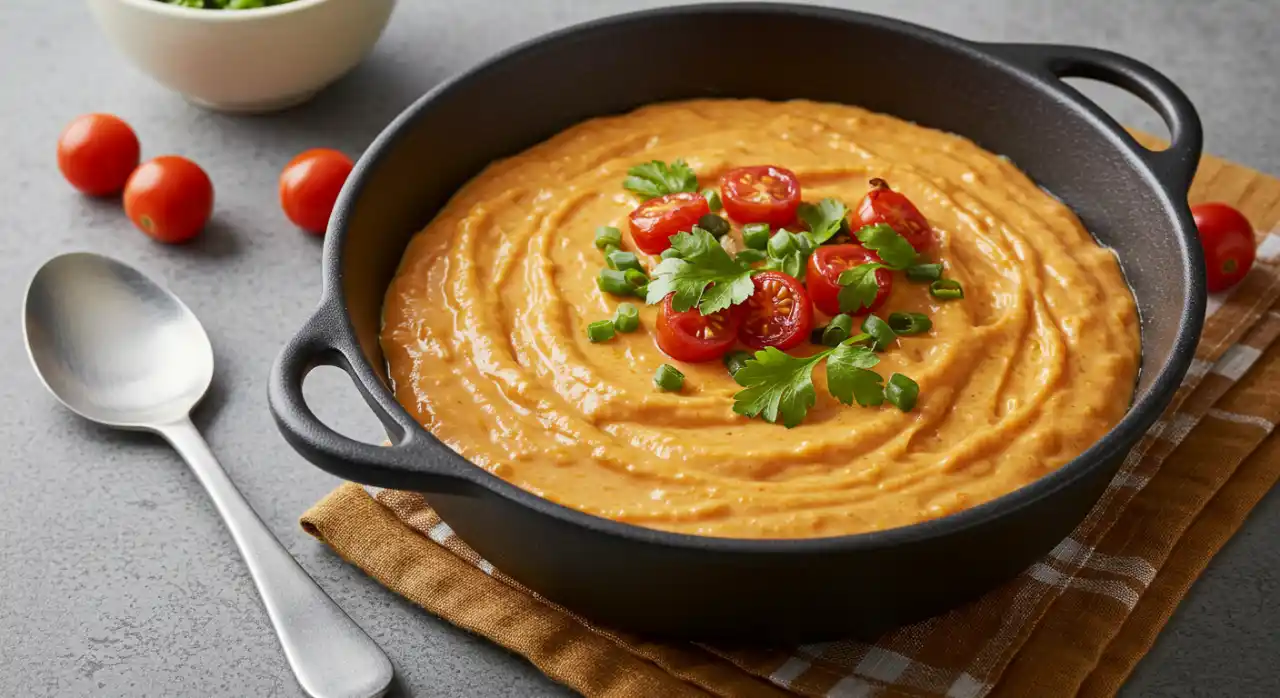What’s better than the smell of warm, golden-brown French toast sizzling in the morning? Honestly, not much. French toast is one of those comforting classics that can turn any breakfast into a treat. Whether you’re having a lazy Saturday morning with the family, hosting brunch with friends, or just feeling fancy on a random Tuesday, this guide has got you covered. From nailing the perfect custard to mastering toppings and even whipping up some fun variations, we’re gonna break down everything you need to know to create the ultimate French toast recipe.
We’ll cover the basics—what it is, why people love it, and a little history (turns out, it’s not just “French”). Then we’ll dig into ingredients, how to get the perfect texture, and even how to make it gluten-free or vegan. Oh, and don’t forget the toppings! Syrup, fruit, whipped cream—you name it. Plus, I included some handy tips for storing leftovers (if you manage to not eat it all). By the end of this, you’ll know your way around French toast like a pro.
Alright, breakfast lovers—grab your spatulas, and let’s do this!
Introduction
What Is French Toast?
French toast is like magic in breakfast form. At its core, it’s pretty simple—sliced bread soaked in a mixture of eggs and milk, then fried to crispy, custardy perfection. But, of course, it’s so much more than that! With just a few humble ingredients, you can create a dish that’s fancy enough to serve at a holiday brunch or quick enough to throw together on a lazy morning. The best part? The formula’s flexible. Got day-old bread? Perfect. Almond milk? Totally works. Wanna toss in a splash of vanilla and cinnamon? Chef’s kiss.
The beauty of French toast is that it’s what you make it. Sweet, savory, stuffed, topped with everything but the kitchen sink—it’s a dish that’s just as creative as you are.
Why French Toast Is a Breakfast Favorite
What makes French toast such a hit? First off, you’re basically turning carbs into dessert, which, honestly, is genius. Who wouldn’t want a sweet, golden-brown breakfast that tastes like a treat? But it’s not just about the flavor—it’s also super easy to make. You don’t need fancy equipment or hard-to-find ingredients. Even better, it’s a crowd-pleaser that works for picky eaters and adventurous foodies alike.
I think a big reason it’s so beloved is the nostalgia factor. For many of us, French toast brings back memories of special weekend breakfasts or cozy family moments. I mean, who doesn’t remember their mom, grandma, or that one cool uncle flipping slices on the griddle and letting you drizzle way too much syrup on top?
Oh, and did I mention how versatile it is? Whether you’re in the mood for classic syrup-drenched slices or want to jazz it up with fresh fruit and whipped cream, there’s a French toast for everyone.
A Brief History of French Toast
Okay, funny thing about French toast—it’s not technically French. Sorry, France. The earliest versions of this dish actually go way back to ancient Rome (yep, that old). The Romans called it “Pan Dulcis,” which is Latin for “sweet bread.” They’d soak stale bread in milk and eggs, then fry it up. Sound familiar?
The French, however, are responsible for the name most of us know—pain perdu, or “lost bread.” The idea was to take bread that was too stale to eat and turn it into something delicious instead of tossing it. Thrifty and delicious? That’s a win-win. Eventually, the dish made its way overseas and became a breakfast staple in the U.S., where we added maple syrup, powdered sugar, and all the other good stuff we love today.
And voilà! That’s how we got the French toast recipe we know and crave now. Fun little tidbit to share at brunch, right?
Essential Ingredients for French Toast Recipe
Choosing the Right Bread
When it comes to making the best French toast recipe, choosing the bread is like picking the lead actor in a blockbuster—it makes or breaks the dish. You want bread that’s sturdy, thick, and can soak up that dreamy custard without falling apart. Day-old bread works best because it absorbs the liquid like a sponge without turning to mush.
Brioche is the gold standard (think rich, buttery, and oh-so-soft), but challah and Texas toast are equally fantastic picks. For a rustic twist, you could even try sourdough or French bread. Got some plain sandwich bread? It’ll do the trick too, though it’s less exciting. Whatever you choose, go for slices that are about ¾ to 1 inch thick—any thinner, and they’ll fall apart.
(Pro tip: If your bread isn’t stale, you can leave it out for a few hours or lightly toast it in the oven for the same effect.)
The Role of Eggs and Dairy in the Custard
Here’s the heart of the French toast recipe: the custard. You’ll need eggs and some kind of dairy to create that silky, rich coating for your bread. Eggs are the glue that brings it all together, giving your French toast its soft texture and slight fluffiness.
When it comes to dairy, the options are endless. Whole milk is the classic choice, but for a richer taste, you can sub in half-and-half or heavy cream. Fancy dairy alternatives like almond milk, oat milk, or coconut milk? Totally works. Keep in mind, cream gives you an indulgent taste, while non-dairy milk keeps it light and dairy-free.
Tip time! Use three eggs per cup of milk for a balance that’s perfectly custardy—not too eggy, not too liquidy.
Spices and Sweeteners for Enhanced Flavor
Where the magic happens! Spices and sweeteners are what take your French toast recipe from “meh” to “wow.” Vanilla extract pumps up the flavor, giving you that sweet, cozy vibe, while a touch of cinnamon adds warmth and depth.
What about sugar? A tablespoon per cup of milk keeps things lightly sweet, though you can adjust based on your toppings. And for a little something special, try a pinch of nutmeg, cardamom, or even pumpkin spice (looking at you, fall lovers). This is your moment to experiment and create a mix that feels like you.
Preparing the Perfect Batter
Whisking the Custard Mixture
Alright, time to mix things up—literally. Making the batter is super simple, but how you whisk it makes a difference. Grab a big mixing bowl (or shallow dish) and first crack your eggs. Whisk ‘em up until the yolks and whites are fully combined. Then gradually pour in your milk, mixing as you go, to keep it nice and smooth.
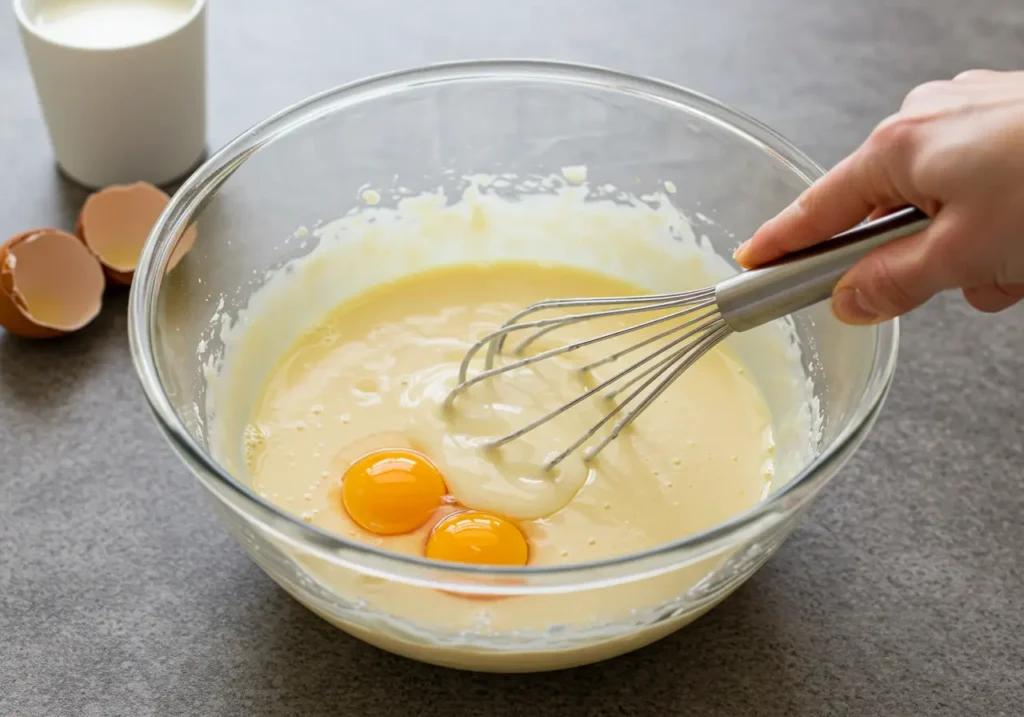
Add your vanilla, sugar, and spices next. (Don’t skip this step—it’s where the flavor party starts.) Whisk it all together until the mixture is silky. You don’t want streaks of egg hanging out in there because, well, who wants chunky custard?
Egg-to-Milk Ratios for Ideal Consistency
Here’s where the science kicks in. A good French toast recipe has the perfect balance between eggs and milk. Too much milk, and your bread will be soggy. Too many eggs, and it gets weirdly rubbery. The sweet spot? Three eggs to one cup of milk.
Want to fine-tune it? If you enjoy a custard-like texture, bump up the milk slightly. If you’re after something firmer, scale back on the dairy a smidge. It’s all about finding that “just right” Goldilocks moment.
Optional Add-Ins to Customize Your Batter
Feeling fancy? Add-ins are your best friend. A dash of orange zest, a splash of rum or almond extract, or even a bit of cocoa powder can take your batter to the next level. Got little ones at home? A spoonful of maple syrup or honey in the blend is always a hit.
If you’re in the mood for something savory, skip the sugar and spices, and throw in a handful of grated cheese or some chopped herbs. Boom—savory French toast, ready to go.
Cooking the French Toast
Preheating the Pan for Even Cooking
Alright, folks, this step is crucial! Before you even think about dipping that bread, get your pan or griddle nice and hot. Preheating ensures your French toast cooks evenly and avoids any weird soggy middles. Use a nonstick skillet or well-seasoned cast iron pan—trust me, they make flipping way easier. Set the heat to medium to medium-low; too hot, and you’ll burn the outside before the inside cooks.
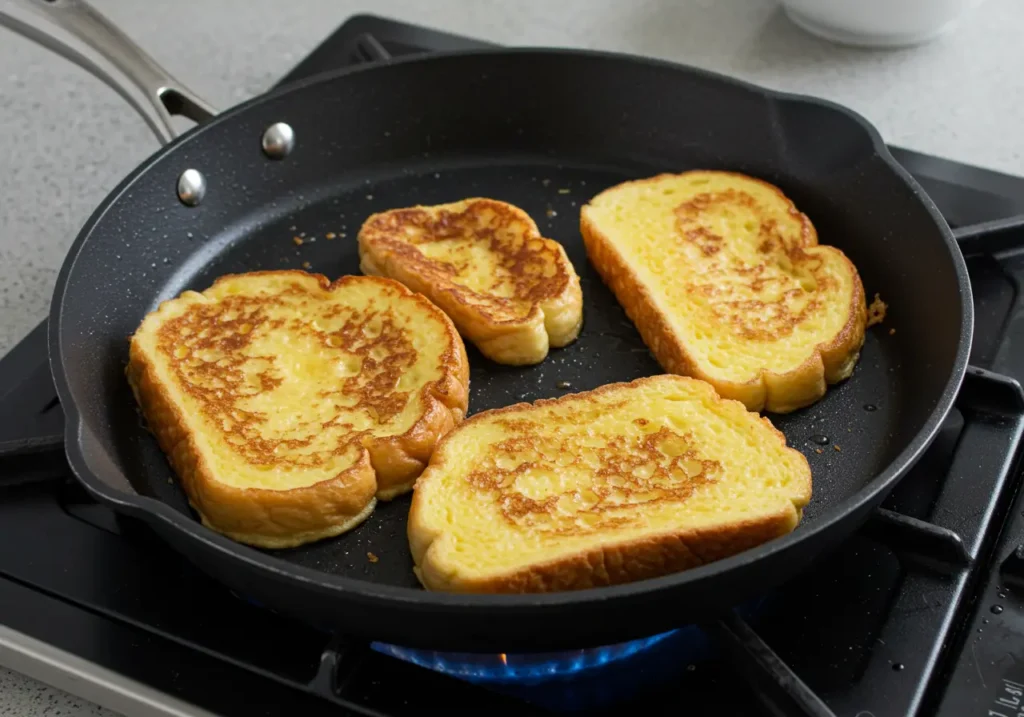
If you’re feeling fancy, drop a pat of butter or a drizzle of oil onto the pan once it’s warm. Not only does it add flavor, but it also creates that crispy, golden crust we all love. By the way, if the butter starts browning too quickly, lower the heat. Slow and steady wins the race here.
Dipping the Bread Without Over-Soaking
Here’s where things can go awry if you’re not careful. Grab a slice of your prepared bread, and gently lower it into your custard mixture. Give it a quick dunk—about 10 seconds per side if your bread’s thick. The goal is to coat the slice thoroughly without turning it into a soggy mess.
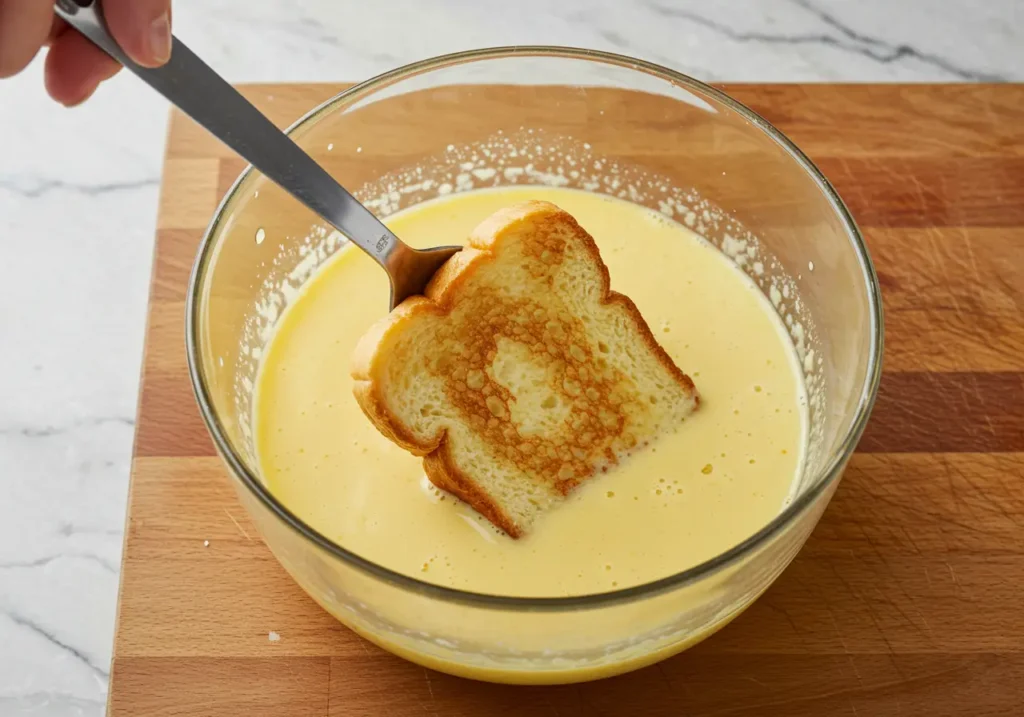
Remember, day-old bread is your best friend here since it holds its shape better after soaking. If you’re using fresh bread, be extra quick with the dipping. Oh, and keep the batter nearby so you can dip a few slices at a time and cook in batches. Nobody likes cold French toast waiting on the sidelines!
Flipping for the Perfect Golden Brown
Now comes the fun part—cooking! Lay your soaked bread gently in the preheated pan, making sure not to overcrowd it. (Give each slice some breathing room.) Cook for about 3–4 minutes per side, or until it turns a beautiful golden brown.
When it’s time to flip, use a wide spatula and a light touch. You’re looking for a crispy edge and caramelized surface—basically breakfast perfection. If you notice any undercooked spots after flipping, don’t sweat it! Just give it some extra time on the new side.
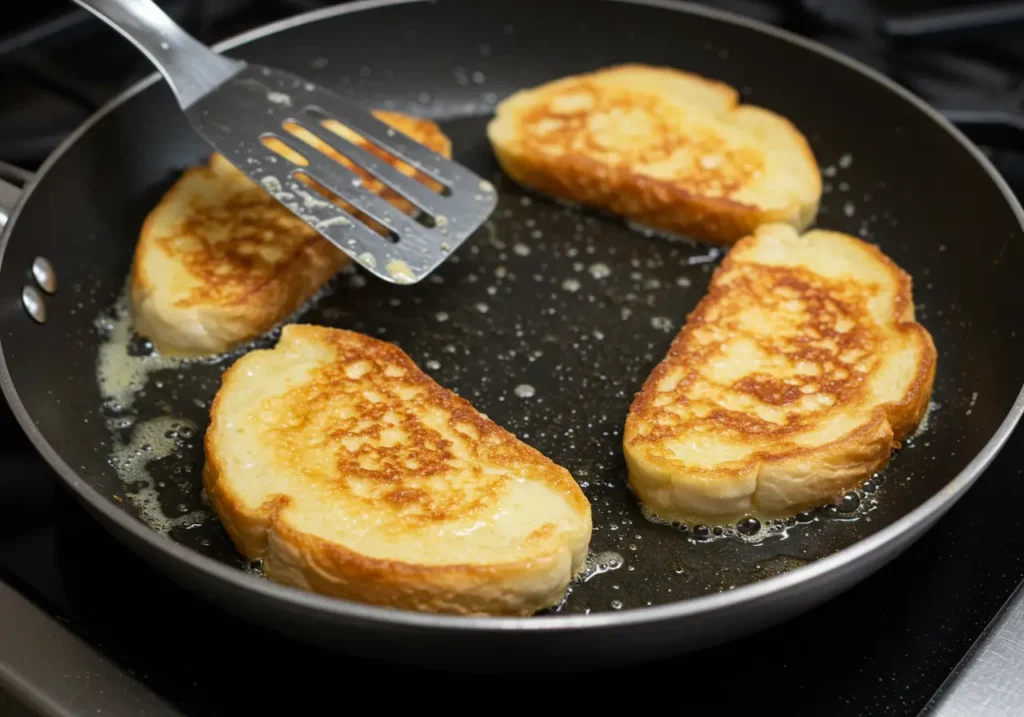
Once cooked, transfer your slices to a warm plate or, better yet, keep them in the oven at 200°F while you finish the rest. This way, the whole batch stays toasty without drying out.
For more delicious breakfast ideas, check out our recipe section for other morning treats like pancakes or waffles!
Toppings and Serving Ideas
Classic Toppings for French Toast
Ah, the classics—sometimes simple is just better. A classic French toast recipe wouldn’t be complete without a healthy drizzle of maple syrup. Pair it with a dusting of powdered sugar for that picture-perfect, diner-style look. Feeling a little extra? Add a pat of salted butter that melts beautifully over the warm toast.
Fresh fruit like sliced bananas, berries, or apple compote is also a traditional favorite. Not only does it add a fresh and tangy contrast, but it also gives your plate some Insta-worthy color. And of course, if whipped cream’s on the table, load it up!
Creative Twists to Try
If you’re in the mood to step up your French toast game, there’s no shortage of ideas. How about adding a dollop of Nutella or almond butter? Or try spreading cream cheese and topping it with your favorite jam for a stuffed French toast that’s out of this world.
Craving something crunchy? Sprinkle your toast with crushed nuts, granola, or a handful of toasted coconut. For a slightly savory twist, top your toast with crispy bacon or a fried egg—it’s a total game-changer! And hey, chocolate lovers, don’t be shy—chocolate chips or a drizzle of ganache can absolutely make French toast dessert-worthy.
Pairing French Toast with Sides and Drinks
The right sides and drinks can elevate your breakfast spread (yep, we’re going there). French toast pairs beautifully with crispy bacon, breakfast sausage, or hash browns for a complete meal. Want something a little lighter? Try a side of yogurt or a small bowl of fresh fruit.
When it comes to drinks, you can’t go wrong with coffee (hot or iced), a good ol’ glass of orange juice, or even a mimosa if you’re feeling brunchy. For the kiddos, a mug of hot chocolate or a glass of milk keeps things festive.
No matter how you serve it, French toast is always a crowd-pleaser. And hey, if you’re looking for more inspiration, check out another recipe article on the site for even more breakfast ideas to shake up your mornings!
Common Mistakes to Avoid
Using the Wrong Bread
Picking the wrong bread can turn a dreamy French toast recipe into a soggy mess—or worse, dry toast. Thin, soft sandwich bread from the grocery store? Hard pass. While it’s okay in a pinch, it generally falls apart after soaking. You want bread with a good structure, ideally a thick, sturdy slice that holds up in the custard.
Day-old bread works best—it’s just dry enough to soak up the egg and milk mixture without turning to mush. Brioche, challah, sourdough, or Texas toast? Now you’re speaking my language. Also, don’t forget to slice it thick, about ¾ to 1 inch—it’s your insurance against floppy toast.
Over-Soaking or Under-Soaking the Bread
Finding the sweet spot for soaking your bread is a real Goldilocks moment—not too little, not too much, just right. Dip it briefly, and your toast won’t absorb enough custard to taste rich and flavorful. Leave it in too long, and, well, you’ve just created soggy cardboard.
For thick, stale bread, aim for about 10 seconds per side in the custard mixture. If your bread is on the fresher side, stay closer to 5 seconds. Be gentle when lifting the soaked bread out of the mixture to avoid it breaking apart. (Pro tip? Use a spatula for extra support.)
Cooking at the Wrong Temperature
Cooking temperature can make or break your French toast recipe. Too hot, and the outside burns before the inside gets a chance to cook. Too low, and you’ll end up with sad, chewy bread. Medium to medium-low heat is your BFF here—it gives the bread time to cook through evenly while creating that irresistible golden crust.
Don’t forget to preheat your pan! A cold pan means uneven cooking, and no one wants patchy toast. Toss in a little butter or oil and listen for a gentle sizzle. If it’s smoking like crazy, dial it back. If nothing’s happening, bump up the heat just a bit.
FAQs
Can I Make French Toast Ahead of Time?
Absolutely! If mornings get hectic (whose don’t?), prepping your French toast recipe ahead of time is a lifesaver. You’ve got a couple of options here. First, you can mix the custard the night before and store it in the fridge. Then, in the morning, all you need to do is dip and cook.
Feeling extra ambitious? Go ahead and cook the toast, then store it in the fridge or freezer. Keep it in the fridge for up to 2–3 days or freeze it for up to a month. To reheat, pop it in the oven at 325°F or toast it for a few minutes—way better than the microwave unless you like your French toast weirdly soggy.
What’s the Best Way to Store Leftovers?
Leftover French toast? Lucky you! First, cool the slices completely (trust me, you don’t want condensation making them mushy). Then, wrap each piece tightly in plastic wrap or foil, or stack them with parchment paper in between and store them in an airtight container.
For fridge storage, aim to eat them within a day or two. If you’re freezing, make sure you label and date the package so you won’t forget about them in the ice kingdom. When it’s time to reheat, follow the same steps mentioned above—oven or toaster is the way to go!
What is the trick to French toast?
The trick to perfect French toast lies in balancing the soaking time and cooking temperature. Soak the bread just long enough to absorb the batter without becoming soggy, and cook it on medium-low heat for an evenly golden crust and soft interior.
What is the ratio of milk to eggs for French toast?
A classic ratio for French toast batter is 1 cup of milk to 2 eggs . This balance ensures the batter is creamy but not too thin or thick. You can adjust slightly depending on how many servings you’re making or the type of bread you’re using.
What is one common mistake when preparing French toast?
One common mistake is over-soaking the bread, which leads to mushy slices that fall apart while cooking. Another error is cooking at too high a temperature, causing the outside to burn before the inside cooks through.
What’s the difference between Texas French toast and French toast?
Texas French toast typically uses thicker slices of bread, often cubed or torn into chunks, and is soaked in a richer batter that may include ingredients like cream or condensed milk. It’s usually baked instead of pan-fried, resulting in a denser texture compared to traditional French toast. Additionally, Texas French toast is often served with more robust toppings like fruit compotes or whipped cream.
For more mouthwatering breakfast ideas or creative takes on classic recipes, check out another recipe article on our website. You never know—you just might find your next breakfast obsession!
Healthier Variations of French Toast
Using Whole Grain or Gluten-Free Bread
If you’re looking to make your French toast recipe a bit healthier, the bread you choose can work wonders. Swap out that buttery brioche for some hearty whole grain bread—it’s packed with fiber and keeps you fuller for longer. Plus, the nutty flavor adds a nice twist that blends perfectly with the warm spices in your batter.
Need a gluten-free option? No problem. There are so many great gluten-free breads on the market these days that work just as well. Look for something sturdy, like a gluten-free sourdough or multi-grain loaf. Pro tip: Toast the slices lightly before soaking them so they hold up better in the custard.
Dairy-Free and Vegan Options
Ditching dairy or eggs doesn’t mean ditching French toast. For a dairy-free spin, simply swap out regular milk for almond, oat, soy, or coconut milk. Each one adds its own unique flavor—oat milk’s creaminess is particularly lovely, while coconut milk gives a subtle tropical vibe.
For vegan options, you can substitute eggs with mashed bananas or applesauce for that custard-like texture. Flax eggs or chia eggs (just mix a bit of ground seeds with water) also do the trick. Combine these with your dairy-free milk, spices, and a little sweetener, and you’re good to go. Trust me, even the biggest French toast purists won’t be able to tell the difference!
Reducing Sugar Without Sacrificing Flavor
If you’re cutting back on sugar but still want a delicious French toast recipe, there are plenty of workarounds. Go easy on added sugars in your custard mix—sometimes the natural sweetness of milk and vanilla extract is enough. For more natural sweetness, try mixing in a little maple syrup, honey, or mashed ripe bananas.
When it comes to toppings, skip the powdered sugar and syrup and load up on fresh fruit. Berries, peach slices, or roasted apples add plenty of sweetness without weighing you down. And if you want a little crunch, sprinkle on some cinnamon or unsweetened coconut flakes—trust me, you won’t miss the sugar one bit!
French Toast Around the World
Pain Perdu: The French Classic
Did you know French toast is literally named after the French phrase “pain perdu,” meaning “lost bread”? The French originally came up with it as a way to use up stale bread that would otherwise go to waste. This version is usually made with baguette or brioche and soaked in a rich custard before being fried to golden perfection.
Pain perdu is all about that creamy, melt-in-your-mouth center with a perfectly crisped edge. It’s often served as a dessert in France, topped with powdered sugar, fresh fruit, or even a drizzle of caramel. Honestly, who wouldn’t want dessert for breakfast?
Torrijas: A Spanish Twist
Over in Spain, they’ve got their own take on French toast. Torrijas are similar in concept but usually soaked in sweetened milk or wine before being fried. Yes, you read that right—wine! (Perfect for when you want a little grown-up flair with your toast.)
Traditionally served during Holy Week (Semana Santa), torrijas are spiced with cinnamon and sometimes a hint of citrus zest. They’re dusted with sugar or drizzled with honey for a finishing touch that’s pure magic. If you’re feeling adventurous, this dish is definitely worth trying.
Hong Kong-Style French Toast
Now, this one’s a game-changer. Hong Kong-style French toast takes the dish to a whole new level. Typically stuffed with peanut butter or sweetened condensed milk, it’s then dipped in an egg batter, fried in butter, and topped with golden syrup. Oh, and don’t forget the giant slab of butter on top for the ultimate indulgence.
It’s not exactly a health food, but hey—it’s comfort food at its finest. This version is usually served as a snack or dessert at Hong Kong cafes, and honestly, you’ll be dreaming about it long after the last bite.
For more international recipes and breakfast inspiration, check out another recipe article on our website. Who knows, you might just find your new favorite dish!
